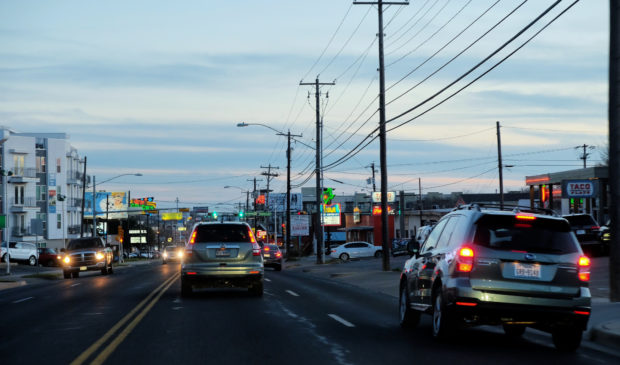City unveils proposed Corridor Construction Program
Thursday, February 8, 2018 by
Caleb Pritchard The long-awaited proposed Corridor Construction Program, the road map to Mayor Steve Adler’s Smart Corridor Plan that he’s now touting as potentially “genius,” is finally out of the stable.
The city’s Corridor Program Office has been working to develop the program voters approved in the record $720 million mobility bond in November 2016 that set aside $482 million for projects along nine of Austin’s busiest corridors.
In its so-called contract with voters, City Council pledged to have those projects completed within eight years of the vote, a compressed timeline given the unprecedented scale of the work to be done.
“It’s been pretty busy,” Corridor Program Office Director Mike Trimble told the Austin Monitor. “We’ve been pretty hunkered down trying to get all of the information together, develop all of the data for the prioritization model, run everything, and then get to this point. We still have a lot of work to do though.”
For seven of the roadways, Trimble’s team referred to existing studies funded by previous bond referendums. Council commissioned the study of two other corridors – Slaughter Lane and William Cannon Drive – as part of the 2016 bond. All told, those studies identified $1.4 billion worth of potential projects along the nine corridors.
Trimble’s team spent 2017 developing a model to prioritize those projects based on the contract with voters, which promised congestion relief, improved transit operations and the promotion of healthy, equitable neighborhoods, among other things. The model also factored in the individual cost of each project.
The results are contained in the proposed Corridor Construction Program, which mainly features pavement rehabilitation, enhanced signalization, raised medians, new bike lanes, transit prioritization and pedestrian safety features.
According to the Corridor Program Office, the cumulative effect of the projects will lead to, on average, a 25 percent reduction in traffic delays across all of the corridors as well as a 15 percent drop in crash rates. However, Trimble was unable to provide the quantitative context behind those percentages.
“We’re still trying to work to try to break out that information in different ways,” he said.
Meanwhile, more intensive projects on the corridors such as full street reconstructions, protected bike lanes and large-scale drainage improvements are not included in the proposed program. Also left out is the Guadalupe Corridor Plan’s recommendation to convert two car lanes on the Drag to transit-only lanes.
Nonetheless, Trimble said the city aims to find more money to fund those projects through other sources. He said that his office has already submitted several of the projects to be reviewed by the Capital Area Metropolitan Planning Organization in order to qualify for state or federal dollars.
“We’re hoping to also be able to leverage some of the development projects that are coming along on some of these corridors to get some of the components of the improvements in place,” he added.
Trimble’s team will present the proposed construction program to various boards and commissions in the coming weeks. The program’s website features a schedule of those meetings as well as contact information for interested organizations to request a presentation and for residents to register their reactions to the plans.
Council will get its first official look at the proposed construction program during a March 20 briefing. An up or down vote is scheduled for March 22.
At least one member is already thoroughly on board. In a statement, Adler proclaimed, “Implementing the 2016 Mobility Bond will cut traffic delays by 25% and collisions by 15% on the streets we most use all over the city. The Smart Corridor Plan is beginning to look like a Genius Corridor Plan.”
Photo by Lars Plougmann made available through a Creative Commons license.
The Austin Monitor’s work is made possible by donations from the community. Though our reporting covers donors from time to time, we are careful to keep business and editorial efforts separate while maintaining transparency. A complete list of donors is available here, and our code of ethics is explained here.
You're a community leader
And we’re honored you look to us for serious, in-depth news. You know a strong community needs local and dedicated watchdog reporting. We’re here for you and that won’t change. Now will you take the powerful next step and support our nonprofit news organization?









